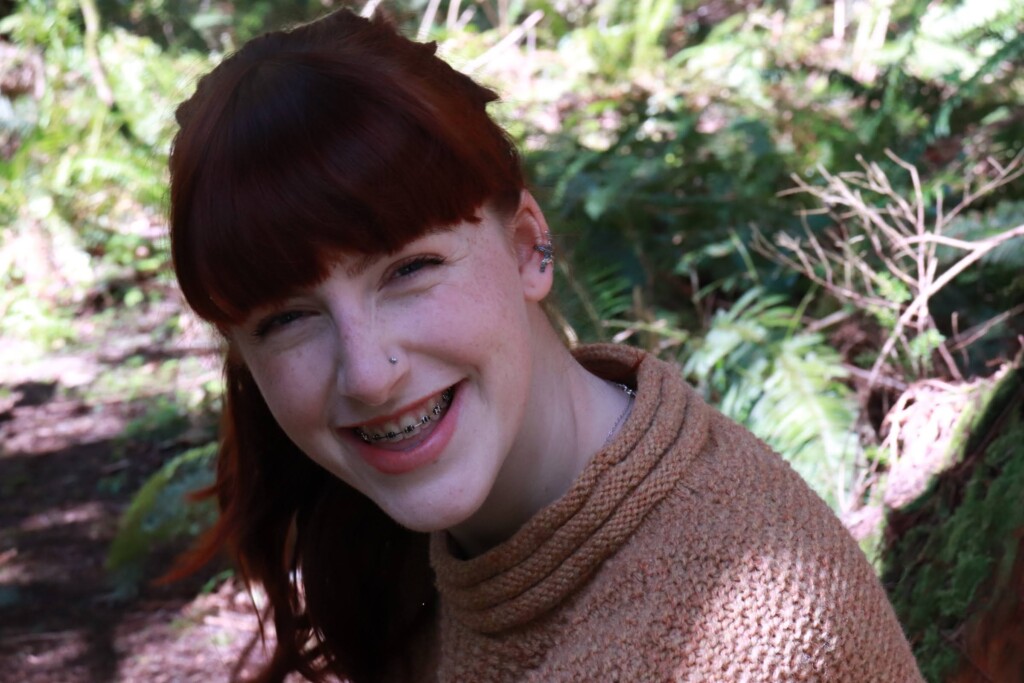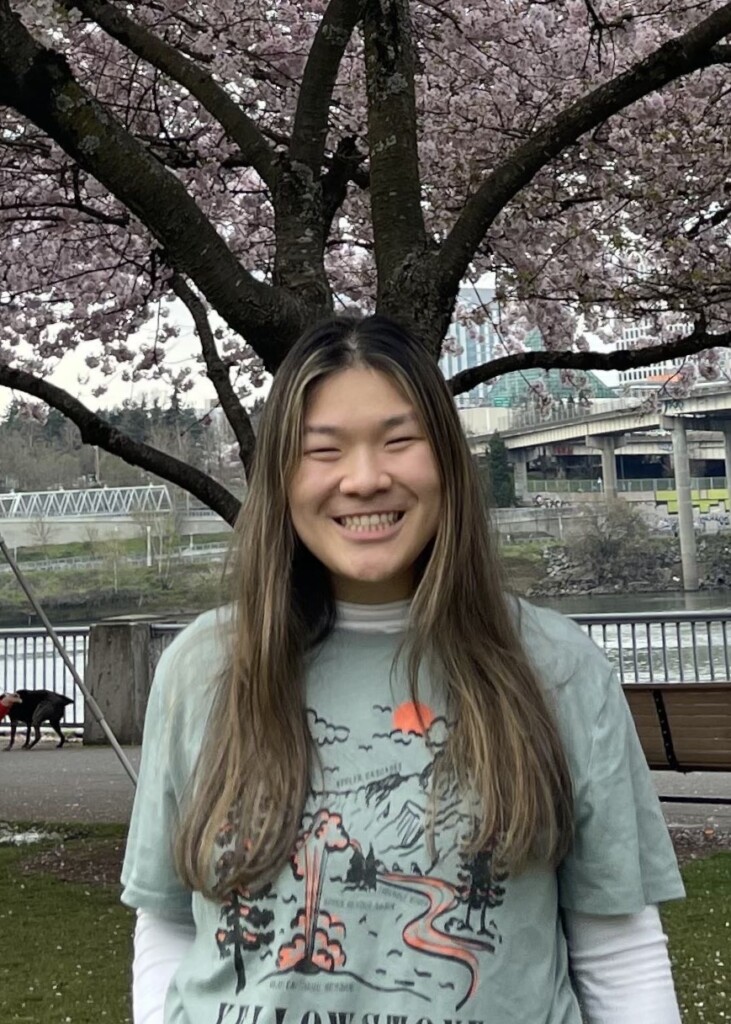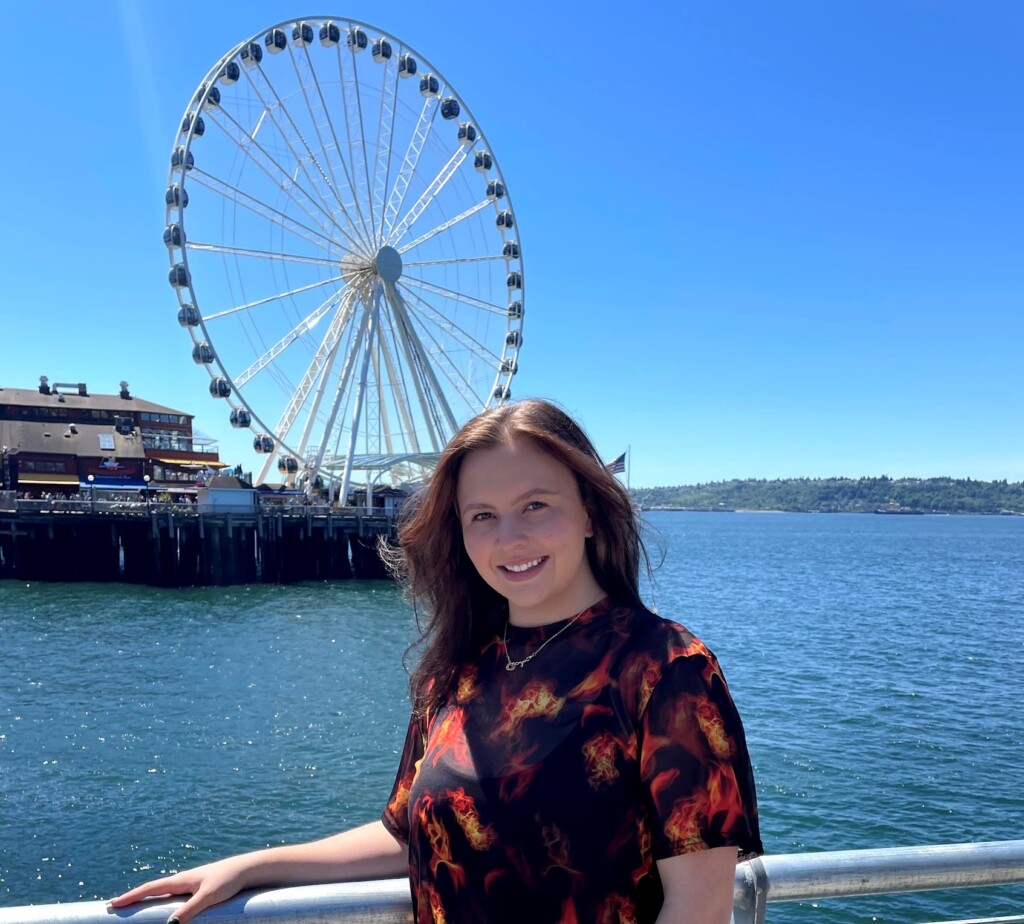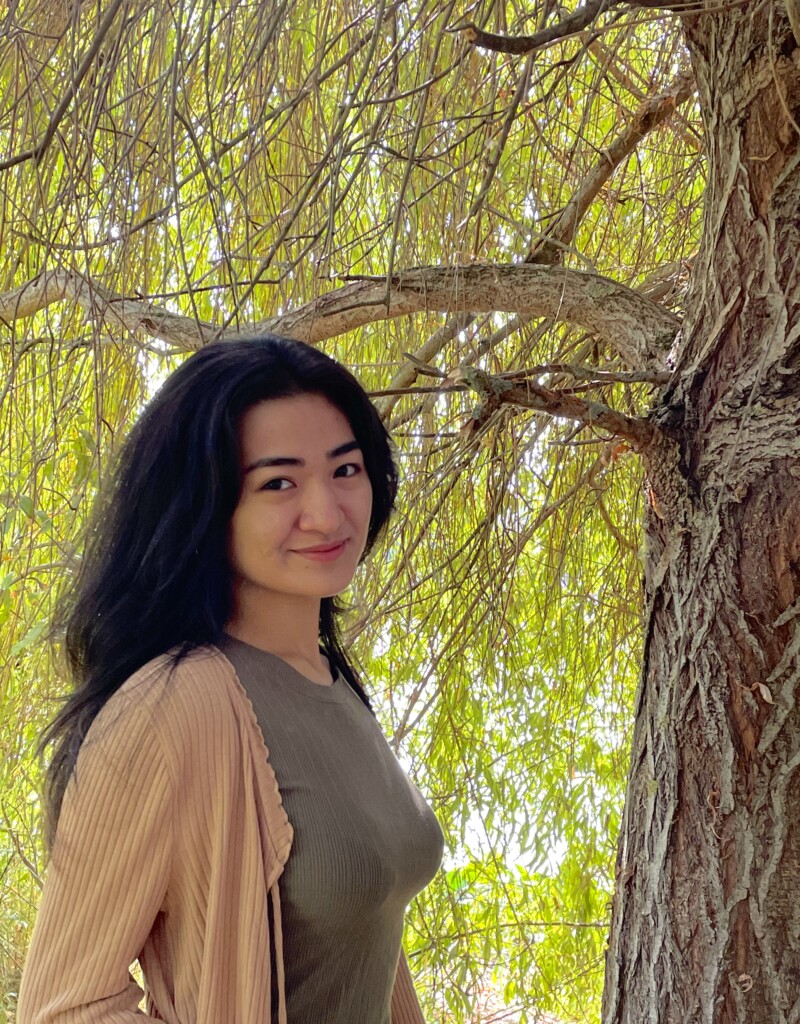2022 Chemistry Capstone Symposium
May 2nd – May 6th, 2022 Chemistry Department Senior Capstone
All talks will be held in Morken Center for Learning and Technology (MCLT), Room 103
There is a 5-minute break built in between each talk. Talks are anticipated to be approximately 20 minutes long, with up to 5 minutes for questions and 5 minutes between talks. The schedule of talks and abstracts is given below.
View by Day: [ Monday | Tuesday | Wednesday | Thursday | Friday ]
1:15-1:40 pm
Amanda Dodson, Senior Capstone Seminar
About 37% of U.S. adults are diagnosed with Metabolic Syndrome (MetS), which is the combination of metabolic risk factors including insulin resistance, abnormal lipid and glucose metabolism, obesity, and hypertension. These complications lead to type 2 diabetes, cardiovascular disease, non-alcoholic liver disease, and atherosclerosis. Adiponectin has been shown to strongly influence the metabolic symptoms associated with MetS. In the past few decades, more attention has been drawn to adipose tissue and its secretion of protein hormones known as adipokines, like adiponectin, to understand their effects on MetS. Overall, adiponectin increases fatty acid oxidation and glucose uptake as well as decreases inflammation and oxidative stress in both the liver and skeletal muscle. Incidentally, serum adiponectin increases when a vegan, plant-based protein diet is adopted. The development of knowledge surrounding adiponectin’s structure, function, and signaling mechanism provides great potential for combating the prevalence of MetS.

1:45-2:10 pm - Medicinal Chemistry & BRCA1 Gene Modification
Hallelu Lee, Senior Capstone Seminar
The BRCA 1 gene in the body gives directions to make protein that inhibit tumor cells. They do so by telling the body to create proteins that act as a tumor suppressor and the proteins keep the cells from growing too fast or at an uncontrollable rate. The BRCA 1 gene is found on chromosome 17 and it affects women more than men. Though there are risks for men as well. There are two copies of this gene in everyone. One of the genes comes from the mother and the other comes from the father. If one of the parents have the harmful variant of the gene, their child has a fifty percent chance of inheriting the harmful variant. This is due to humans having 46 chromosomes in a cell that are divided by 23 pairs. The BRCA 1 protein helps to fix strands breaks in damaged DNA cells. This gene is very important because if DNA becomes damaged, it can lead to apoptosis (cell death) or cancer. Inheriting or having a harmful variant of this gene can lead to a higher risk of breast and ovarian cancer. Due to the harmful variant, the body wouldn’t produce proteins that would help aid in repairing damaged DNA cells. This leads to cancer.
The risk of getting ovarian or breast cancer in a woman’s lifetime is increased if a woman inherits a harmful mutation of the BRCA 1 gene. In women who possess the normal BRCA 1 gene, the chances of getting breast cancer is 13% in their lifetime. With the harmful variant of the gene, women have a 55-72% chance of getting breast cancer by ages seventy to eighty. The likelihood of women with the normal BRCA 1 gene getting ovarian cancer in their lifetime is 1.2 percent. With the harmful BRCA 1 variant, the chances of getting ovarian cancer by the age of 70 to 80 is 39-44 percent. For men, they have a higher risk for prostate cancer if they inherit the BRCA 2 gene. However, men can get breast cancer as well with the mutated harmful BRCA 1 gene, though it is rare. The most affected by inheriting a harmful variant of the BRCA 1 gene are people of Ashkenazi Jewish descent. They have a 2% chance of having the inherited BRCA 1 gene. Different geographic and ethnic populations have different variants of the same harmful mutated BRCA 1 gene.
There are many ways to treat cancer. Some ways are through surgery, radiation, hormone therapy, targeted therapy, and chemotherapy. This article will focus on chemotherapy. One type of chemotherapy drugs are PARP inhibitors. Other types of chemotherapy to target cancer cells would be Platinum Agents and Taxanes. PARP inhibitors prevent DNA damage from getting repaired. This leads to chromosomal instability, cell cycle arrest, apoptosis, and lesions in DNA that are supposed to be repaired through homologous recombination. This makes for an effective treatment. Platinum based drugs are usually cisplatin, carboplatin, and oxaliplatin. Doctors can administer these agents with other drugs to target different types of cancers. These platinum agents work to stop the DNA strands from replicating. By stopping the unzipping and replicating, the cancer growth is stopped and causes apoptosis. The problem with this type of chemotherapy is that many patients develop a resistance to these platinum-based drugs. This limits their use and effectiveness. Taxanes are a microtubule stabilizing agent. They prevent the rapid growth of cells and leads to cell death. The most common taxanes are docetaxel and paclitaxel. They were approved for use in the medical field in 1993 and 1995, accordingly.
2:10 - 2:30 pm - Break

2:30-2:55 pm
Heather Hare, Senior Capstone Seminar
Dry eye disease is an increasingly prevalent condition that presents many uncomfortable symptoms and patients are often left without adequate treatment options. A current treatment option is corticosteroid eye drops. Although corticosteroids work effectively and efficiently, there are serious risks associated with long term use of this treatment. A new option that may be safer to use long term in the case of dry eye disease are reactive aldehyde species inhibitors. Reactive aldehyde species are molecules that react and bind with other molecules and disturb them from performing their proper functions. In doing this, inflammatory agents are activated and thus cause inflammation of the eye, in this scenario. In those individuals diagnosed with dry eye disease, it is found that there are increased levels of reactive aldehyde species present. In order to relieve patients of their dry eye disease symptoms, it is important to block this inflammatory pathway, as this condition is often linked to inflammation. Molecules known as reactive aldehyde species inhibitors are beginning to be used as treatment against this condition. The drug under development in clinical trials for FDA approval acting as a reactive aldehyde species inhibitor is called reproxalap. This is a new treatment with a different mechanism for treating dry eye disease than the common current treatment of corticosteroid eye drops. We hope that this review will help present a better understanding of the potential relief that reactive aldehyde species inhibitors might offer to those suffering from dry eye disease.

3:00-3:25 pm - Generation of N105H Trp5p S. cerevisiae Strain for Mutagenic Analysis
Hayden Cross-Schroeder, Senior Capstone Seminar
Cancer and antibiotic resistance are of big concern in the medical field and are both attributed to mutations arising from DNA damage. Mutagenic pathways are relatively well studied, but very little research has been performed to better understand why one form of mutagenesis occurs over another. Saxowsky lab research has suggested that the DNA sequence surrounding a mutation site may impact the type of mutagenesis that occurs. The two mutagenic pathways studied in the Saxowsky lab include replicational and transcriptional mutagenesis. Replicative mutagenesis occurs during replication and can therefore, only occur when cells are actively growing and dividing, whereas transcriptional mutagenesis can occur in cells that are in a growth state or a non-growth state. Transcriptional mutagenesis has the potential to stimulate replicative mutagenesis in a process known as adaptive mutagenesis. This process can be demonstrated in a reversion assay for an essential protein for yeast growth such as tryptophan. When tryptophan synthase (Trp5) function is knocked out by a point mutation yeast can no longer replicate unless reversion occurs via transcriptional mutagenesis. This paper demonstrates the successful generation of a N105H point mutation necessary to test whether the DNA sequence surrounding the site of DNA damage determines the mutagenic pathway.
3:25 - 3:40 pm - Departmental Photo

1:15-1:40 pm
Parker Johnson, Senior Capstone Seminar
Perfluorocarbons (PFCs) are very stable and unreactive compounds with the ability to bioaccumulate in organisms. This is alarming because we are projected to increase the amount of PFCs manufactured by quite a significant amount. The production and accumulation of PFCs in water systems across the globe has already been linked to numerous adverse health effects. Advanced Reduction Processes (ARPs) that enlist the help of hydrated electrons show promise for breaking down a variety of PFCs, including the most common types of PFCs, PFOA (perfluorooctanoic acid) and PFOS (perfluorooctanesulfonic acid). The most promising of these is a DHEH pathway which occurs through cycles of decarboxylation-hydroxylation-elimination-hydrolysis reactions that cleave C–C bonds and progressively shorten its chain each cycle until the compound has been reduced to CO2 and HF. There is far more work and time needed to fully understand the mechanisms and how applicable this method would be to counter real-world accumulation of these compounds but the DHEH method can achieve a 100% defluorination of many PFCs and will play a role in furthering our understanding of these compounds.

1:45-2:10 pm
Jessica Yan, Senior Capstone Seminar
The process of nanocrystals generates precursors during the synthesis. The synthesis of Zinc Selenide (ZnSe) using a low-tech-grade solvent, oleylamine. An intermediate preemptively (ZnSe)13 is formed by combining the zinc precursor and selenide precursor. At room temperature the intermediate is taken for characterization using instrumental analysis: diffusion ordered spectroscopy (DOSY) NMR, N-Proton NMR, and Uv-vis spectroscopy to determine what was synthesized prior to further synthesis of the nanocrystals. Characterizing using DOSY allows for the estimation of the diffusion constant and mass of the intermediate. Whereas Uv-Vis spectroscopy allowed for the confirmation of absorbance at a certain wavelength to determine the formation of clusters and reinforce what type of intermediate was generated. Moreover, the intermediate was taken to deeper characterization after synthesis.
2:10 - 2:30 pm - Break

2:30-2:55 pm - Stability of Perovskite Solar Cells: Thermal, Light, and Moisture-based Challenges
Kate Lychik, Senior Capstone Seminar
Perovskite solar cells have shown tremendous potential in regards to renewable energy over the past decade. They have likewise generated a great amount of interest due to their excellent optoelectronic properties and the comparatively affordable and simple process of manufacturing. However, they are not without their limitations. Perovskites are hindered from reaching their full potential by issues of stability, as they degrade in the presence of heat, UV light, and moisture. Over the last decade, research has been conducted to try to mitigate those problems and open the door for future advancements. Highlighted in this review are a few methods that have shown promise in diminishing the decomposition of the perovskite crystal. These include the coordination of lead ions by small molecules with lewis-base properties, or improving the composition of the perovskite-electron transport layer interface. Rather than providing a definitive solution, the ideas presented here serve as a foundation upon which further research can be structured in order to secure a pathway for a future non-reliant on environmentally harmful forms of energy.

3:00-3:25 pm
Duncan Haddock, Senior Capstone Seminar
Blends of electronic and ionic conducting polymeric blends and their effect on the current production in organic electrochemical transistors (OECT) devices were studied. Different weight fraction blends of the charge conductive polymer (poly(3-hexylthiophene-2,5-diyl, P3HT) and an ion conductive ROMP based polymer with oligomeric ethylene oxide sidechains were studied at weight fractions of 1.00, 0.95, 0.85, 0.75, 0.65, 0.40, and 0.20 with respect to P3HT. A solution of 100 mM potassium hexafluorophosphate (KPF6) was used to dope the OECT. Transconductance was measured for each blend as well as a threshold voltage. Using that data, the figure of merit, µC*, was subsequently calculated for all systems using a range of device geometries. The figure of merit, µC*, was maintained at 55 +/- 5 F/(cmVs) up to a blend weight fraction of about 0.75 with KPF6.

1:45-2:10 pm - Color and Control of Ceramic Crystalline Glazes
Max Matunis, Senior Capstone Seminar
Crystalline glazes are a class of decorative ceramic coatings that are characterized by the formation of large spherulites when slowly cooled from a molten state. The incentive for developing these coatings is purely aesthetic, and there are many factors that influence their appearance. The goal of this research is to create an understanding of crystalline glaze systems by explaining in tandem the mechanisms of color production and crystal formation.
These aspects are mainly governed by the chemical composition of the glaze, and the heat
treatment process used to develop the crystals. Understanding the many facets of each of these
parameters allows glaze chemists and potters to produce crystalline glazes with the desired
properties. Through adjustments to the composition and heat treatment of the glaze, the
aspects of crystal size, shape, color and quantity can be tuned to reflect whatever standard of
beauty is set forth.
2:10 - 2:30 pm - Break

2:30-2:55 pm - How Does Solvent Affect the Growth of Zinc Selenide Semiconductor Nanocrystals
David Yun, Senior Capstone Seminar
The unique molecular composition and different physical properties have increased the use and interest of nanocrystal technology within modern-day society. Specifically, the control of size and shape has been of high interest for applicational uses like drug delivery, electronics, and optoelectronics. Nanocrystals are comprised of tiny atoms that are less than 1000 nanometers in size that vary in their size, shape, and configuration. In this paper, we are concerned with how different ratios of solvents: oleylamine to hexadecane ratios may alter the growth of the ZnSe semiconductor nanocrystals. Furthermore, the research was interested in implementing green chemistry to avoid harmful solvents like phosphine, cadmium, and diethyl zinc-based semiconductor nanocrystals. After analysis, the solvent ratio between oleylamine and hexadecane may affect the nanocrystal length shown in the UV-Vis spectra and x-ray diffraction peaks. More testing needs to be done to confirm the shifts and size of the peaks to indicate nanocrystals increasing in length. Therefore, transmission electron microscopy must be run in order to obtain further morphological and crystallographic information about the nanocrystal products.

3:00-3:25 pm
Nic Celebrado, Senior Capstone Seminar
The importance of DNA and its preservation can be noted due to the presence of many repair mechanisms developed to mitigate the potential harm DNA damage and its subsequent mutations can cause to the organism’s genome. Some types of DNA damage develop a lesion at the site and can stall the polymerase and prevent synthesis of new RNA, and subsequently, protein, however, there are instances where the lesion can be bypassed with misincorporation of a nucleotide base. Depending on the timing of the bypass, this event can be dubbed replicational, or transcriptional mutagenesis, and one possible outcome leads to cells suddenly developing a growth state phenotype from a non-growth state. Previous work in the Saxowsky lab observed sequence context differences surrounding a site of mutation, using the 8-oxoguanine reversion assay within the canavanine system. The current work of the lab is to develop yeast strains suited to testing if sequence context matters within the Trp5 system.

1:15-1:40 pm
Madison Herrmann, Senior Capstone Seminar
Viloxazine is a newly approved attention deficit hyperactivity disorder (ADHD) medication for patients 6-17 years of age. Viloxazine is a non-stimulant medication utilizing neurotransmitters to increase the amount of noradrenaline in the body to reduce negative ADHD symptoms. While viloxazine has been researched to help treat ADHD it differs from other traditional ADHD medications such as Adderall, also known as d-amphetamine, which is a stimulant medication increasing the amount of dopamine in the synaptic cleft to reduce ADHD symptoms. This review highlights the key differences between viloxazine and Adderall (d-amphetamine) including medication synthesis, structural differences, and solubility in the body.

1:45 - 2:30 pm - Break
2:30-2:55 pm
John Khongsuk, Senior Capstone Seminar
Since the late 1980s, quantum dots have become heavily studied and widely used in a variety of applications that include optical imaging, solar energy conversion, and drug delivery techniques. Quantum dots (QDs) are highly
fluorescent nanocrystals that can serve different functions based on the size and shape of the nanocrystal. This review will highlight quantum dot biosensor complexes used in two studies conducted in vitro and in vivo by Jie et al. and Chan et al, respectively. These two studies synthesized quantum dots to use in their optical imaging experiments to determine whether these techniques are viable options as cancer cell detectors. QDs have been highly sought out materials used in optical imaging studies to detect target cells due to its long incubation periods and ability to maintain the chemical effects of light during optical imaging processes.
Jie et al. studied the usage of CdSe/ZnS quantum dots and dendrimer nanoparticles in their electrochemiluminescence (ECL) assay technique to determine if DNA probes can display chemiluminescence to determine the concentrations of target cells. Chan et al. utilized CuInS (CIS) quantum dots in their near-infrared- activated (NIR) Forster resonance energy transfer (FRET) based method that utilizes CIS quantum dots and lanthanide-doped up-conversion nanocomposites (UCNPs), sensitive to matrix metalloproteinases (MMPs), that can stimulate optical imaging capabilities using the red-visible lighting that is displayed by the UCNP-QD complex. The overexpression of MMPs is associated with Cal27 oral cancer cells highlighted in this study. The study QDs have potential use in biomedical applications since QDs can be used in biosensor complexes to label live cells for longer
periods of time compared to commonly used organic dyes. This property enables medical professionals to do more with less, meaning any cell samples observed can remain stable for longer periods of time and be analyzed with better precision and accuracy.

3:00-3:25 pm
Shekinah Lopez, Senior Capstone Seminar
Gaucher disease is a rare autosomal recessive genetic disease that is usually regarded as a lysosomal storage disorder due to the build-up of glucocerebroside (GlrCer) in macrophages. Mutations arise from the GBA gene that results in a conformational shift in the enzyme glucocerebrosidase (GCase) that affects amino acid residues preventing the breakdown of
GlcCer. Symptoms are characterized by organ enlargement, bone deficiency, and neurological involvement that are often untreatable. Three different types of Gaucher disease, types 1, 2, and 3 (GD 1, GD 2, GD 3), are distinct from the severity of the disease, level of curability, and range
of symptoms. Enzyme and substrate reduction therapy is the main therapeutics for curing the disease. The treatments vary in method; Enzyme Replacement Therapy (ERT) replaces GCase with the imiglucerase enzyme which conducts a similar mechanistic pathway while Substrate Replacement Therapy (SRT) replaces a GlrCer to prevent further accumulation. Gaucher disease is continuously under the advancement of therapies and other curable techniques.

1:15-1:40 pm
Ethan Marshman, Senior Capstone Seminar
Diseases have plagued humanity for thousands of years. In recent history, especially post-industrial revolution, human ability to combat diseases has rapidly developed thanks to scientific interdisciplinary work leading to effective disease treatments, vaccines, surgical interventions, and prevention methods. Throughout modern medical history, clinical trials and testing have been integral to evaluating medical interventions, invasive treatments, and pharmaceutical drug treatments. These testing methods have come in the form of animal testing and human testing. Two dimensional tissue modeling and three dimensional tissue modeling emerged in the mid 20th and 21st centuries, respectively. Each furthered the ability to model and test therapeutics for disease treatment and symptomatic alleviation. Traditional modeling practices in two dimensions and animal modeling fail to fully emulate the intricacies of the human neurological system and circuitries; however, three dimensional modeling has proven to be an effective method to recapitulate human tissue microenvironments. Neurological-specific microfluidics devices and three dimensional modeling are paving the way to understanding complex neurodegenerative diseases such as Parkinson’s Disease. Parkinson’s Disease is caused by a variety of factors from environmental triggers to genetic mutations. Researchers successfully generated a tri-compartment microfluidic device to reconstitute the neural circuitries in vitro as well as successfully generating three dimensional organoids to model midbrain function. Like neurological disease modeling, cardiovascular disease modeling requires the specific emulation of cardiac tissue microenvironments to account for the spatial and geometric assemblies found in human tissues. Microfluidic cardiovascular models were successfully generated to emulate the extracellular matrix – a microenvironment found in cardiac arterial tissues. This extracellular matrix was not accounted for in two dimensional modeling. Utilizing this microfluidic model, a disease model for thrombus formation and development was successfully generated. This model provided a basis for which researchers determined a connection between arthersclerotic plaque accumulation and thrombus exacerbation. Further proving the wide array of applications of microfluidics and its ability to reflect highly specific microenvironment properties, pulmonary models have been successfully generated and tested. Pertaining to the SARS-CoV-2 pandemic, a crucial step in understanding the human pathophysiological response to infection is being able to model the diseased tissue microenvironments. Utilizing dual chambered microfluidics devices, researchers were able to fully quantify and qualify the rampant infection and immune response of pulmonary endo/epithelial cells on the chip. Diversifying the pulmonary disease pool, microfluidics devices were utilized in modeling and assessing non-small-cell lung carcinoma cell proliferation. Researchers confirmed a clinical correlation between work of breathing and rate of tumor growth following qualitative and quantitative analysis of microfluidics devices emulating lung tissues. Henceforth, microfluidics devices have proven to be an incredibly effective modeling technique for advancing knowledge in human pathophysiological responses to diseases, evaluating novel treatment techniques, and testing clinically acquired hypotheses in the body systems aforementioned and others.

1:45-2:10 pm
Yaquelin Ramirez, Senior Capstone Seminar
In recent years, the rate of people with diabetes has increased among Americans. Currently, there is research on glucose kinase activators for the treatment of type 2 diabetes. These glucose kinase activators target glucose kinase in metabolic pathways in pancreatic β-cells and liver cells. One glucose kinase activator that targets pancreatic β-cells and liver cells is dorzagliatin. Dorzagliatin is able to interact with glucose kinase at its allosteric pocket and form strong hydrogen bonds, allowing for the stimulation of glucose kinase in glycolysis. By stimulating glucose kinase, insulin can be synthesized and secreted by pancreatic β-cells. Therefore, glucose can be converted into glycogen as storage. Dorzagliatin has successfully undergone two clinical phase studies. Phase II of the clinical studies explored the minimum effective dosage and the effects on pancreatic β-cells function. The phase II clinical studies determined that the minimum effective dose is 75 mg taken twice daily. Dorzagliatin increases the sensitivity of β-cells towards blood glucose, suggesting that dorzagliatin successfully activates glucose kinase and glucose is converted to glycogen. Future studies include performing clinical studies of dorzagliatin with metformin, the current medication for type 2 diabetes, to analyze the effects between both treatments.
2:10 - 2:30 pm - Break

2:30-2:55 pm - Synthetic Strategies for Synthesis of a Single Ion Polymer
Alyssa Bright, Senior Capstone Seminar
Lithium-ion batteries are popular due to their high energy density and rechargeability. However, the current electrolyte solution makes use of volatile organic solvents which are a combustion hazard. A possible solution to improving the safety of these batteries is to replace the volatile solvents with an ionically conductive polymer. This research focuses on the synthesis of a single ion containing monomer and its subsequent ring opening metathesis polymerization. The synthetic route for the monomer has been achieved and improved upon and polymerization has reached oligomeric lengths.

3:50 pm - Keynote Speaker (Morken Center for Learning and Technology 103 and Virtually)
Call Me, Beep Me: My Transition from Studying Biochemistry to Radiochemistry
Tran Hoang (PLU ‘20), Weill Cornell Graduate School of Medical Sciences
Before starting her graduate studies at Weill Cornell Pharmacology, Tran found herself sitting in Rieke Science Center, looking at the course requirements for a Chemistry degree during her first year at PLU, overwhelmed and unsure of what this major held for her. However, one summer research experience, one semester abroad, one internship at a federal agency, and four years of learning about Chemistry later, she is now seen running down the halls of Memorial Sloan Kettering Cancer Center, prepping for her first in vivo imaging study. This talk encapsulates Tran’s academic journey at PLU and the steps she took to build her career in scientific research. When she is not in the lab, Tran can be easily found wandering The Metropolitan Museum of Art, biking along the West Side of Manhattan, or practicing her jab-crosses at the boxing studio.
3:50 - 4:00 pm - Closing
PLU Faculty and CHEM 499 Students:
Please use this form to submit an evaluation for each student capstone presentation.




Social Media